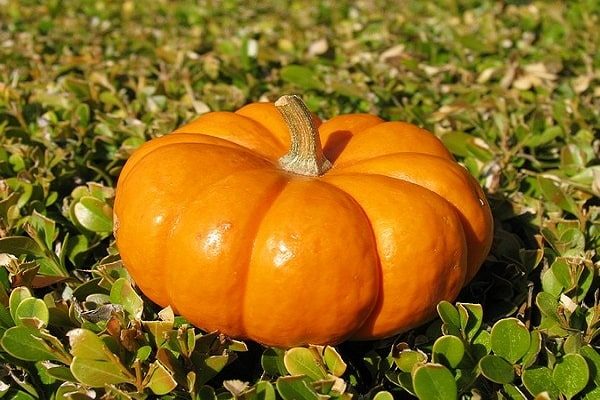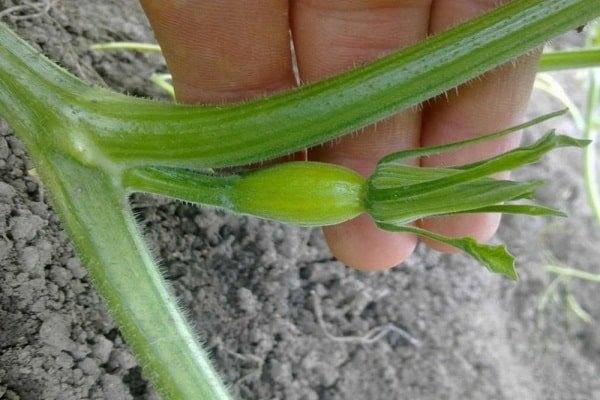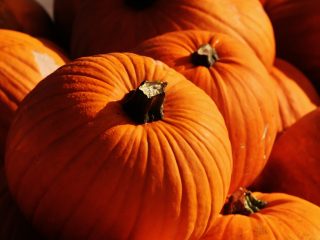Content
Pumpkin Honey dessert is a young variety developed by the Russian agricultural firm Aelita and entered in the State Register of the Russian Federation in 2013. This type of pumpkin is approved for cultivation in all regions of the country in private household plots.
Description of pumpkin honey dessert
Pumpkin Honey dessert belongs to a variety of honey, which are distinguished into a separate group due to the pronounced honey taste of the pulp.
Honey dessert is a large-fruited early-maturing universal variety. The plant is long-leaved, with large, slightly dissected dark green leaves. Scourges and leaves are rough. The flowers are yellow, large, bell-shaped. On each lash, from 2 to 5 fruits are tied.
The root system, like all pumpkins, is branched, deeply penetrating into the ground.
Description of fruits
The pumpkins of this variety are large, well segmented, flat-round in shape with a small depression in the area of the stalk. The peel is thin, evenly colored, rough. In the photo of the pumpkin Honey dessert, you can see the fruits of orange, orange-red or dark pink color. The description of the variety indicates that their average weight is 4–6 kg, however, very often specimens weighing up to 11 kg are found in vegetable gardens. The pulp is orange or bright red, thick, fleshy, juicy. Seed nest of medium size, filled with medium-sized white seeds.
The taste is honey-nutmeg, sweet, with a pronounced aroma. The composition of the pulp of this variety has a record carotene content; it is also rich in vitamins and minerals. Due to its nutritional value and low calorie content, pumpkin Honey dessert has found wide application in cooking, dietary, and medical nutrition. Mashed potatoes, juices, baking fillings are made from it; it is a part of vegetable side dishes, salads, desserts, cereals. This pumpkin is also good for baking. Healthy dishes from this vegetable can help with diseases of the digestive system and vitamin deficiencies. Pumpkin is especially valuable for baby food - it is excellent for the first feeding of infants, since it does not contain allergens and does not need additional sugar.
Fans of exotic cuisine prepare interesting dishes from flowers: they can be fried in batter or stuffed.
This variety is also suitable for industrial cultivation, since pumpkins are stored for a long time and tolerate transportation well.
Variety characteristics
The Honey dessert variety belongs to early ripening: depending on the growing conditions, the fruits reach technical maturity in 90 - 110 days from the moment of germination.
This frost-resistant crop variety tolerates temperature extremes well. On the territory of Russia, it can be grown everywhere. The variety thrives in the south and in the middle lane; subject to agricultural technology for the conditions of a cold short summer, it grows well in the northern regions.
Pumpkins are medium keeping quality - producers determine the minimum shelf life of about 100 days, but usually, if the conditions are strictly observed, the pumpkin lies longer.
Different seed producers claim different yields. So, you can find the predicted yield in the range from 3 to 11 kg per 1 sq. m.To a large extent, these figures depend on the region of cultivation.
This variety tolerates drought well, but needs moisture to form green mass and ovaries.
Pest and disease resistance
The varietal feature of the pumpkin Honey dessert is its resistance to the main diseases of pumpkin crops. However, plantings should be regularly inspected for lesions. Of the pests, the most common are spider mites, aphids, caterpillars, which can be dealt with using folk methods - infusion of hot pepper or garlic, as well as a soap-ash solution.
Advantages and disadvantages
The undoubted advantages of the pumpkin variety Honey dessert include the following features:
- unusual honey taste;
- high content of vitamins and minerals;
- relatively simple agricultural technology;
- resistance to diseases of culture;
- good keeping quality of fruits;
This variety also has some disadvantages that should be taken into account when cultivating:
- large area required for landing;
- exactingness to soil fertility.
Growing technology
Well-lit areas protected from strong winds are suitable for growing this pumpkin variety. The plant prefers light loamy and sandy loamy soils; a rich harvest can be obtained by planting a crop on a compost heap. When planning plantings, you need to take into account that, like other large-fruited pumpkins, Honey Dessert grows strongly. The optimal planting pattern is 100x100 cm. To save space, pumpkins can be planted near buildings that will support its long lashes.
This variety also grows well in high beds, which warm up faster and do not flood in case of heavy rains.
Before winter, the site is dug up and holes are prepared, into which organic and mineral fertilizers are applied. If it was not possible to fertilize the soil in the fall, humus can be applied in the spring 14 days before planting.
Depending on the weather conditions, pumpkin Honey dessert can be grown both by seedling and non-seedling methods. Seedlings begin to be driven out 20-25 days before the planned day of planting in open ground. On the garden bed, as a rule, seedlings are planted in the third decade of May - the first decade of June.
Seed preparation, both for seedling and non-seedling methods, includes the selection of the strongest seeds, disinfection, soaking in growth stimulants.
For seedlings, seeds are planted in individual containers of 2-3 pcs. A mixture of garden soil with humus or compost is used as a substrate. To maintain the necessary microclimate for germination (heat and humidity), the containers are covered with foil. Of the emerging seedlings, only the strongest plant is left; the rest are pinched off. Before planting seedlings in the garden, it is recommended to harden it, taking it outside for several hours a day.
Planting this pumpkin variety in open ground should be in late May - early June. The use of seeds that have hatched will accelerate germination. 2-3 seeds are sown into prepared holes, deepening by 5-8 cm. It is recommended to cover the planting sites with a film overnight until shoots appear.
Regular care of the crop consists in watering, loosening, weeding, feeding and examining the plantings for the presence of disease and pest damage. Watering this vegetable has some peculiarities: the plant needs a lot of moisture during the growing season, during the ripening of the pumpkins, watering is reduced, and before harvesting, they stop altogether. Some growers mulch the soil around the main stem. This avoids the formation of an earthen crust after watering, retains moisture and protects the plant from weeds.However, there is no great need for this procedure.
In addition, the plant needs shaping. In order for the large fruits of the pumpkin honey dessert to ripen, it is recommended to leave 2 to 4 fruits on the plant.
To stimulate the growth of adventitious roots, the stems of the plant are sprinkled with damp earth. This allows you to provide the plant with additional nutrition.
Harvesting pumpkin Honey dessert in August - September in the phase of technical maturity, cutting it off together with the stalk. Store pumpkins at + 5 ÷ 15 ° C in a dry place. In the freezer, diced pulp can be stored for up to a year.
Conclusion
Pumpkin Honey dessert is considered to be one of the most delicious and healthy pumpkins from the honey variety. Simple agricultural technology, relative unpretentiousness and resistance to diseases make this variety attractive for cultivation throughout Russia.












